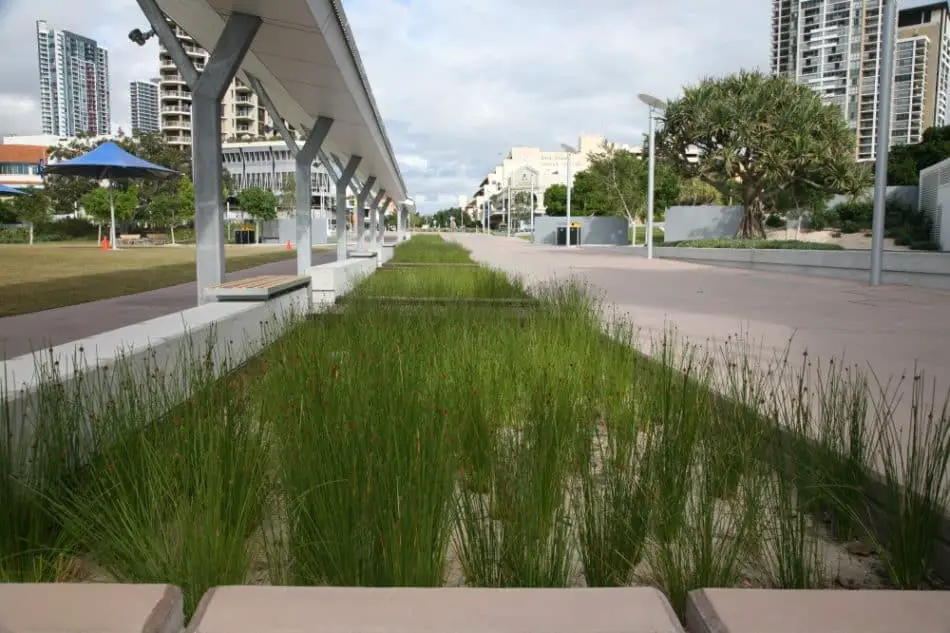How Does Architecture Integrate Principles Of Water-sensitive Urban Design?

Water Sensitive Urban Design (WSUD) is a relatively new approach to urban planning that has gained traction in recent years. This approach seeks to integrate the concept of water management into traditional urban design practices, with the ultimate goal of creating more sustainable and resilient cities.
WSUD is based on the principle that water is a vital resource that should be incorporated into every aspect of urban design. This includes the management of stormwater runoff, the preservation of natural waterways, and the promotion of water conservation measures.
There are several key benefits to implementing WSUD principles in urban areas, including:
1. Improved Water Quality
One of the primary benefits of WSUD is that it can significantly improve water quality. Traditional urban design practices often lead to increased levels of pollutants in waterways, due to factors such as stormwater runoff and industrial waste. By incorporating WSUD practices, however, it is possible to filter and clean water more effectively, reducing pollution levels and improving overall water quality. This can have a positive impact on both the environment and public health.
2. Increased Sustainability
Another key benefit of WSUD is that it promotes increased sustainability. Traditional urban design practices often rely heavily on non-renewable resources such as fossil fuels, which can contribute to environmental degradation and climate change. By incorporating water management principles into urban planning, however, it is possible to create more sustainable cities that minimize waste and energy consumption. This can help to create a more resilient and environmentally-friendly urban environment.
3. Enhanced Flood Protection
WSUD also plays a critical role in improving flood protection in urban areas. Traditional stormwater management practices often lead to flooding and other water-related disasters, which can have devastating consequences for both people and property. By incorporating WSUD practices such as green roofs, rain gardens, and permeable pavements, it is possible to reduce the risk of flooding and improve overall flood protection in urban areas.
4. Increased Water Availability
Another key benefit of WSUD is that it promotes increased water availability. Traditional water management practices often lead to water scarcity, particularly in areas with high levels of urbanization. By promoting the use of water conservation measures such as rainwater harvesting and greywater reuse, it is possible to increase the availability of water resources in urban areas and reduce reliance on traditional water sources such as groundwater and surface water.
5. Improved Aesthetics
Finally, WSUD can also contribute to improved aesthetics in urban areas. By incorporating green spaces, water features, and other nature-based elements into urban design, it is possible to create more visually appealing and livable cities. This can have positive effects on both the well-being of residents and the overall attractiveness of urban areas to visitors and investors.
FAQ
What are some common WSUD practices?
There are several common WSUD practices that are frequently used in urban planning. These include green roofs, rain gardens, permeable pavements, and bioretention systems. These practices are designed to help filter and clean water, promote water conservation, and reduce the risk of flooding.
What are the main challenges associated with implementing WSUD?
Implementing WSUD can be challenging, particularly in areas with established urban infrastructure. Some of the main challenges associated with implementing this approach include limitations in space, the cost of incorporating new design elements, and the need for public buy-in and support.
What is the future of WSUD?
WSUD is likely to become an increasingly important aspect of urban planning in the future. As cities become more densely populated and concerns around climate change continue to grow, the need for sustainable and resilient urban design practices will become even more pressing. WSUD offers a promising approach to addressing these challenges, and is likely to become more widely adopted in the coming years.
How can I learn more about WSUD?
There are several resources available for individuals interested in learning more about WSUD. These include online courses, industry conferences, and professional organizations. By staying informed about developments in this field, it is possible to gain a deeper understanding of this important and innovative approach to urban planning.
What can I do to promote WSUD in my community?
There are several steps individuals can take to promote WSUD in their own communities. These include advocating for sustainable urban design practices, supporting local initiatives that promote WSUD, and engaging with local policymakers to encourage the adoption of water management principles in urban planning.
What is the biggest potential impact of WSUD?
The biggest potential impact of WSUD is that it can help to create more sustainable and resilient cities that can adapt to future challenges such as climate change, urbanization, and resource scarcity. By incorporating water management principles into urban design, it is possible to create more livable and desirable urban environments that promote the well-being of both people and the planet.
In conclusion, WSUD is a promising approach to urban planning that offers a range of benefits for communities and the environment. By incorporating water management principles into traditional urban design practices, it is possible to create more sustainable and resilient cities that can adapt to future challenges. By promoting the adoption of WSUD in urban planning, we can help to create a better future for ourselves and for generations to come.


Post a Comment for "How Does Architecture Integrate Principles Of Water-sensitive Urban Design?"